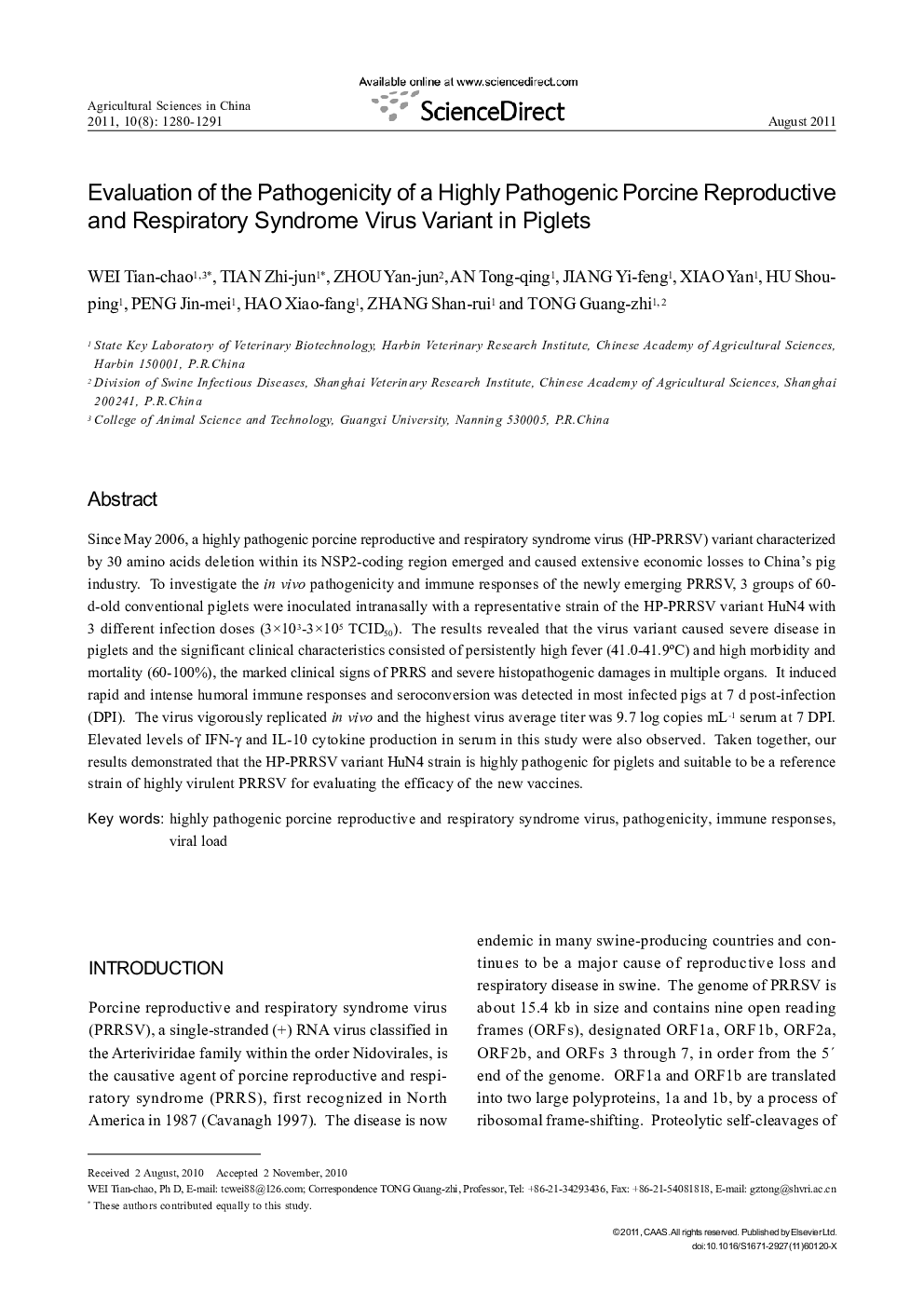| Article ID | Journal | Published Year | Pages | File Type |
|---|---|---|---|---|
| 4489973 | Agricultural Sciences in China | 2011 | 12 Pages |
Since May 2006, a highly pathogenic porcine reproductive and respiratory syndrome virus (HP-PRRSV) variant characterized by 30 amino acids deletion within its NSP2-coding region emerged and caused extensive economic losses to China's pig industry. To investigate the in vivo pathogenicity and immune responses of the newly emerging PRRSV, 3 groups of 60-d-old conventional piglets were inoculated intranasally with a representative strain of the HP-PRRSV variant HuN4 with 3 different infection doses (3(103-3(105 TCID50). The results revealed that the virus variant caused severe disease in piglets and the significant clinical characteristics consisted of persistently high fever (41.0–41.9°C) and high morbidity and mortality (60-100%), the marked clinical signs of PRRS and severe histopathogenie damages in multiple organs. It induced rapid and intense humoral immune responses and seroconversion was detected in most infected pigs at 7 d post-infection (DPI). The virus vigorously replicated in vivo and the highest virus average titer was 9.7 log copies mL−1 serum at 7 DPI. Elevated levels of IFN-γ and IL-10 cytokine production in serum in this study were also observed. Taken together, our results demonstrated that the HP-PRRSV variant HuN4 strain is highly pathogenic for piglets and suitable to be a reference strain of highly virulent PRRSV for evaluating the efficacy of the new vaccines.
